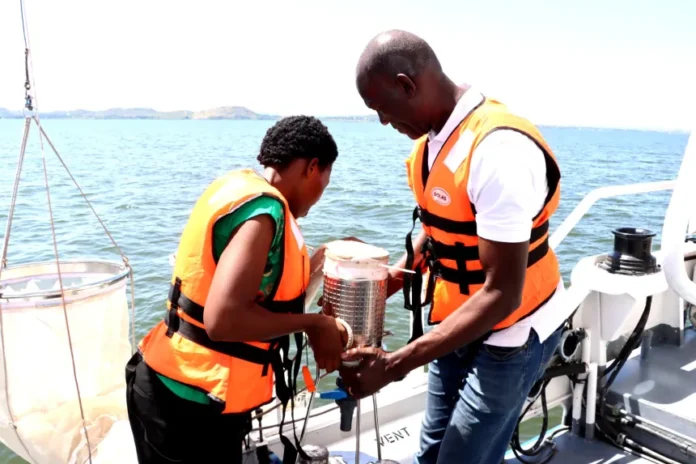
A groundbreaking regional initiative to monitor and safeguard the ecological health of Lake Victoria has officially begun in Mwanza, Tanzania. Scientists and environmental experts from Kenya, Uganda, and Tanzania have launched a cross-border water sampling drive aimed at assessing pollution levels and tracking the spread of invasive species in Africa’s largest freshwater lake.
The project is spearheaded by the Lake Victoria Basin Commission (LVBC) with technical and financial support from the German Development Agency (GIZ) under the “EAC for Nature” initiative. It marks a significant collaborative step by East African Community (EAC) member states toward generating science-based data to inform conservation strategies and environmental policy decisions.
According to LVBC Executive Secretary Dr. Masinde Bwire, the initiative will focus on identifying pollution hotspots, gauging the presence of invasive aquatic plants such as the water hyacinth, and evaluating the overall health of the lake.
“The study’s findings will be vital in guiding the conservation of Lake Victoria’s biodiversity and ecological balance,” said Dr. Bwire in an interview with the Kenya News Agency (KNA). “This data will help drive effective, evidence-based interventions.”
Water samples are being collected from 46 strategic sites across the three countries. The comprehensive monitoring programme will analyze physical, chemical, and biological parameters—including nutrient concentrations (nitrogen, phosphorus), silica, alkalinity, and total suspended solids. In addition, on-site measurements such as pH, turbidity, water temperature, dissolved oxygen, and light penetration (PAR) are being taken to offer real-time environmental indicators.
The study also includes the analysis of major ions—calcium, magnesium, chloride—and key pollution indicators like Chemical Oxygen Demand (COD). Toxic heavy metals, including arsenic, mercury, and lead, will be examined in selected locations from both surface and bottom layers of the lake. Biological indicators such as phytoplankton composition and abundance are also under review to detect signs of harmful algal blooms.
Dr. Bwire emphasized that the joint exercise is a testament to the region’s shared responsibility in protecting Lake Victoria, which supports the livelihoods of over 40 million people across the EAC.
The findings of the exercise are expected to shape future environmental policies, regional development projects, and grassroots conservation efforts. As Lake Victoria continues to face mounting threats from pollution, climate change, and poor land-use practices, the regional collaboration aims to set a precedent for sustainable lake management and ecological stewardship.
Written By Rodney Mbua


















